Inside the England museums averaging fewer than one visitor a day
 The Bay Museum
The Bay MuseumNearly everybody knows of Stonehenge, the Tower of London and the Natural History Museum. Each year, Visit England's annual statistics reveal the millions who flock to explore the nation's best-known attractions. But what of the 20 or so at the other end of the list who see fewer than 300 visitors a year?
From the outside, The Bay Museum on Canvey Island in Essex looks more like a toilet block than a trove of military treasures.
Once a Cold War naval magnetic monitoring station, the diminutive white-washed building was plucked from a possible future as an ice cream shack and turned into a museum.
Inside, nearly every piece of wall space is packed with military items from both world wars, including weapons, medals, uniforms and models.
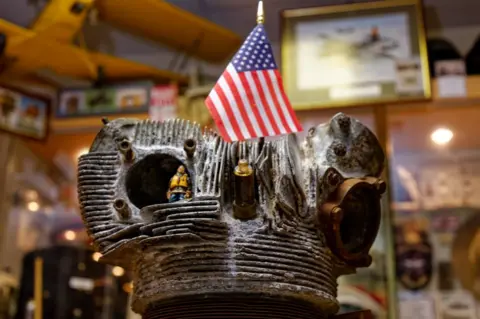
One of the key exhibits is an engine cylinder from a B-17 which crashed at Canvey Point in 1944.
Come rain or shine, the team of volunteers here - three of whom are owners of the items exhibited - aim to open every Sunday throughout the year.
With about 200 visitors a year, The Bay Museum was Visit England's 18th least-visited attraction.
On some days, not a single visitor makes it through the door.
On other days, there might be a small flurry, with people coming from as far away as the US, Argentina and Nigeria.
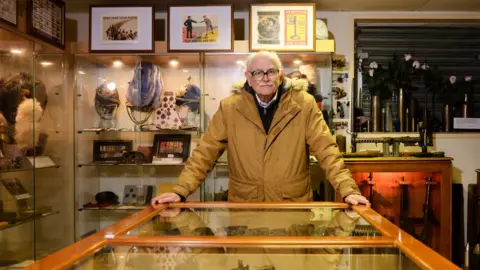
"We recently had somebody from Ukraine and another from Russia - on the same day," says museum treasurer Martin Daniell.
"It is an absolute pleasure when we get people who have come a long way. Mostly, it is people from Essex and London.
"People often say they expect to spend 10 minutes here. Three hours later, they are often still here and suddenly worry about the car parking."

"We're all about remembrance and education," says David Thorndike, who was a 10-year-old boy when the B-17s collided near Canvey and remembers the immediate aftermath.
"We had a young woman recently who thanked us for helping her with her GCSE work. They were so interested in the museum - it makes it very rewarding."

Some of the museums with the fewest annual visitors declined to speak with the BBC for fear they might suddenly attract more people than they could accommodate.
Susanna Chancellor, the present beneficiary of the Stoke Park Settlement Trust, is perfectly content with the modest visitor numbers she sees each year.
Northamptonshire's Stoke Park Pavilions in Stoke Bruerne, Towcester, hosted 140 or so visitors in 2022.
It might not sound a huge number but it was a 520% rise on the 20 guests recorded by Visit England in 2021.
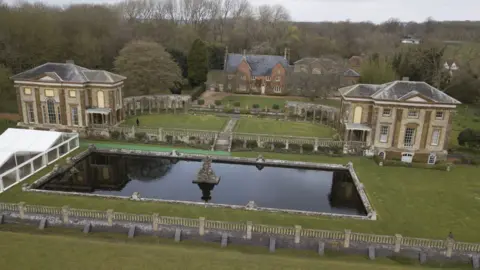 Stoke Park Pavilions
Stoke Park PavilionsThe site occupied by the two pavilions has a regal past.
In 1541, the 400-acre deer park at Stoke Bruerne was acquired by Henry VIII, who used it for hunting.
Then, in 1629, the ill-fated Charles I gave it to Sir Frances Crane to settle a debt.
Under Sir Frances, the medieval hunting lodge was replaced by an impressive new country house, the first in England built in the Italian Palladian style.
Linked by colonnades stood two pavilions - one, a chapel; the other, a library.
Today, the house (and its later replacement) are gone. The two pavilions, however, whose design is attributed to Inigo Jones, still stand.
Most of the visitors who come to see the pavilions are either locals, walkers or those with a bent for architecture.
"We had a couple of bus loads of architectural students visit last year," says Mrs Chancellor. "We also get people doing trips down the canal who think it would be nice to come and have a look. And we've had a few visits from caravan club members.
"Because we're between Northampton and Milton Keynes, we get quite a few visits from people who live in the area. Some did not previously know we were here before, which is nice.
"We've only got one lavatory," she says.
"And we've got no café, no shop and no entrance fee - and visitors seem to appreciate a bit of quiet."
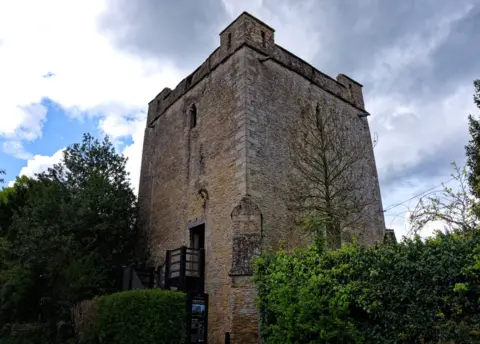
Places like The Bay Museum and Stoke Park Pavilions form "a crucial and valuable part" of the range of attractions out there, says Andrew Stokes, director of Visit England.
"From our renowned museums, galleries, castles and historic houses to our stunning gardens, rural, wildlife and outdoor attractions there really is an attraction to suit every taste and budget," he adds.
But can our smallest attractions offer something household names cannot?
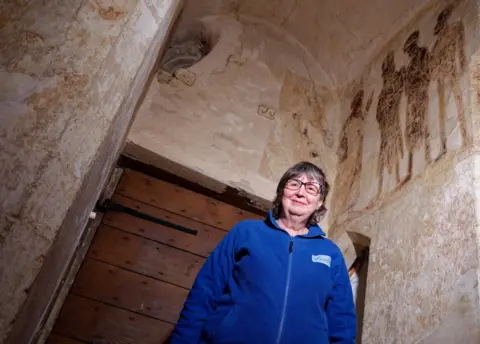
Karyn Hillier, a volunteer guide at Longthorpe Tower, Peterborough, believes the answer is a resounding "yes".
The tower, which houses one of the most complete sets of 14th Century domestic wall paintings in northern Europe, had just 183 visitors a year at the most recent count.
But each of those visitors will get a bespoke tour of the building, Ms Hillier says.
"We vary the information based on the type of group we have coming," she says.
"If we have children, we will focus on the animals and the bonnacon (a mythical bovine creature which emits burning poo), and we have colouring that children can do.
"We also get historians and people from outside Peterborough come who do know about the tower and its history.
"We try and give a sense of what life was like for the Thorpe family when this was built."
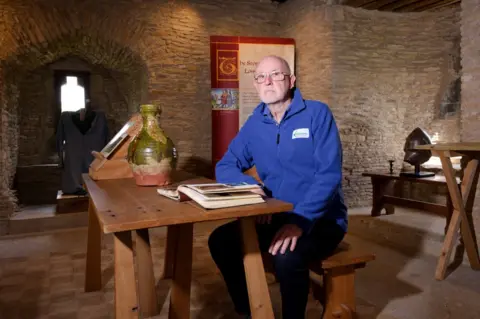
But for those who do make it to Longthorpe, says fellow volunteer Alan Brimmell, the offer is something "unique to the country".
"Most of existing medieval paintings are in churches, cathedrals and monasteries.
"This was somebody's status symbol and it is purely accidental that it has survived because most did not.
"People are surprised when they leave."
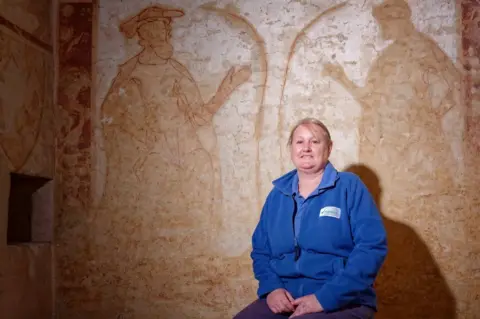
Like many of the nation's smallest museums, Longthorpe is only open at weekends (during the warmer months) or when guides are available.
Volunteer Amanda Johnson says the tower often attracts "people from around the world coming to see specific things", including medievalists and art historians.
But the biggest source of pride for those keeping England's smallest attractions going comes not from the miles a visitor will travel but from local discovery.
"We have people who have lived locally all their lives and didn't realise there was a tower here," says Ms Johnson.
"Most people who come in to have a look around leave pretty impressed."

Follow East of England news on Facebook, Instagram and X. Got a story? Email [email protected] or WhatsApp 0800 169 1830
